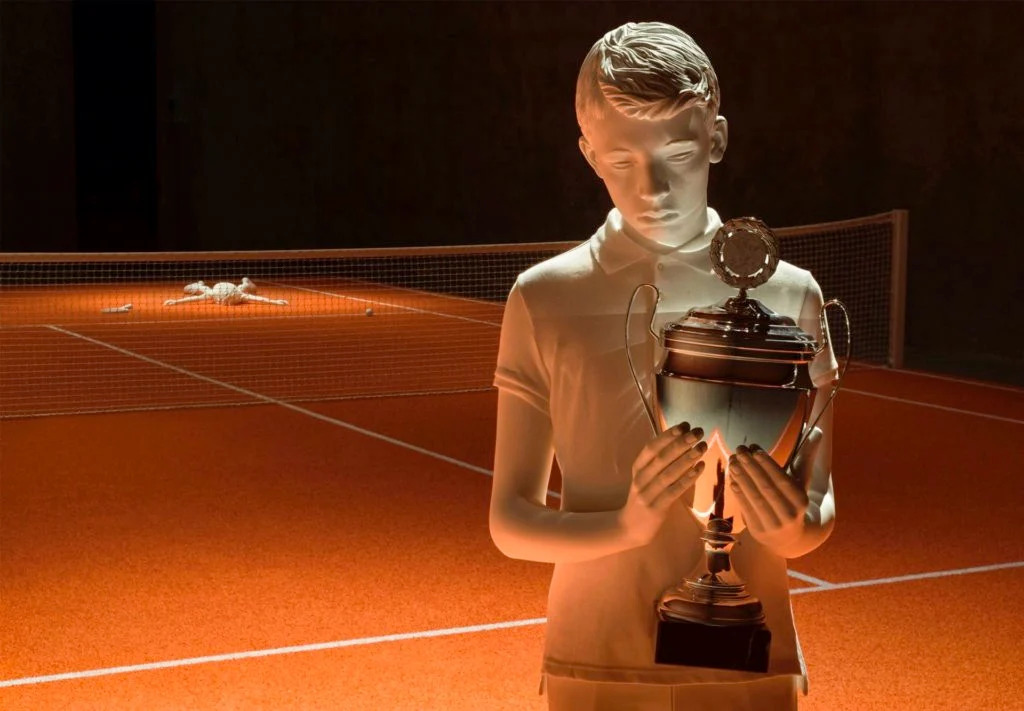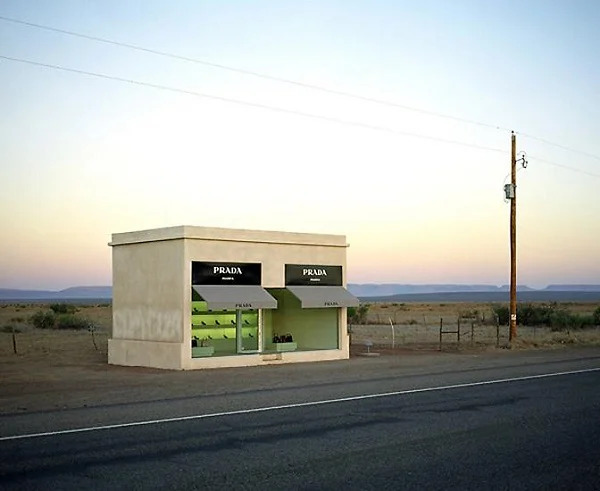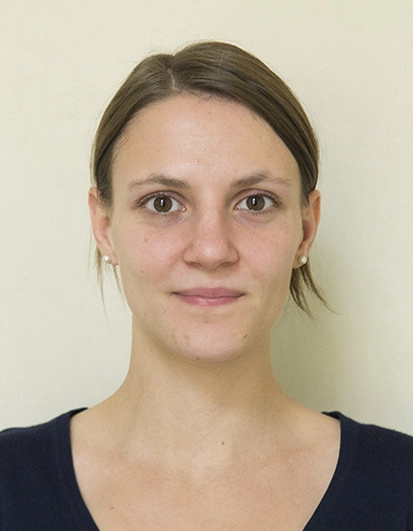At exhibitions by Michael Elmgreen and Ingar Dragset, you feel less like you're in a gallery and more like you've stepped into the middle of a story. These Scandinavian artists love transforming traditional gallery spaces into unexpected settings—like an abandoned swimming pool at London’s Whitechapel Gallery in 2018, or a library they installed at Prague’s Kunsthalle last year. Their carefully staged scenes, like frozen moments from a film, invite viewers to explore the themes and interpret the story in their own way. This approach is also central to Short Story, likely their only work inspired by sports, where a tennis court became part of an exhibition at Johann König Gallery in Berlin and later at a contemporary art center in Copenhagen.

In 2020, the Danish-Norwegian duo Elmgreen & Dragset created a tennis court installation in the gallery spaces of König Galerie—originally a parish church of St. Agnes—followed by another version a year later in the industrial halls of Copenhagen Contemporary. The court was just 10% smaller than the regulation size, which, according to the International Tennis Federation, is 78 feet long and 36 feet wide—about 24 meters by 11 meters for competitive matches. For singles matches, the width is reduced to 27 feet.
„
There's no team spirit or shared gameplay where there’s a winner and a loser.
The artists placed three white-painted bronze sculptures on Flo, Kev, and Bogdan on this exhibition court. According to the artists themselves, these figures aren’t exactly typical: "Statues of children and the elderly don’t appear very often—unless they’re emperors, kings, or some other important figures." Besides designing the environment and the characters, the famous duo also sketched out a basic storyline.
.png)
Imagine two boys who have just finished a tennis match. One is lying exhausted in the middle of the court, his racket tossed aside nearby. On the other side of the net stands his opponent, holding a trophy. The court is shrouded in darkness, with only the main figures illuminated. Both boys appear disappointed. Surprisingly, it’s not just the loser who looks downcast, but also the winner, who stands with his back to his opponent, holding the trophy somewhat uncertainly, staring at it without any sign of triumph.
"One lost, the other won, yet both seem somehow unhappy. Today, everything is about winning and being the best, but maybe being a winner isn’t always the best position to be in," says one of the artists about the scene they created. The installation reflects on the balance between competition and individualism and critiques the tendency to divide society into winners and losers. "Where there’s a winner and a loser, there’s no team spirit or shared gameplay," the artists explain.

The third figure, the only spectator of the match, is seated in the corner of the room, outside the court. This is Bogdan, an older man in a wheelchair who seems to have been watching the match. Or at least it appears that way. In reality, it’s unclear how involved the dozing man is in the game between the two boys. There are other details as well that challenge the seemingly straightforward scene, confirming that the installation is open to multiple interpretations.
For instance, could the tennis match between the boys simply be a memory from Bogdan’s past, resurfacing before him? The year 1969 engraved on the trophy, along with the wheelchair as the only shiny object in the space, might suggest this. Or perhaps the man, dressed only in grey pants and slippers, is just a grandfather passively observing the game between his two grandsons.
.png)
The installation may also hint at the process of adolescence for both boys, with all the emotions that accompany this challenging age. The defeated boy appears to be much younger than his opponent, raising the question of whether the match was fair given their size difference. It seems that each competitor also comes from a different social class. While the younger Kev wears ill-fitting clothes, the taller Flo is dressed in a stylish tennis outfit. "Despite relatively low expenses for equipment, this sport is often associated with the upper middle class," the artists emphasize another aspect they aimed to highlight.
However, the continuation of the story is left open by the artists, and it’s up to the audience to decide how it unfolds. "We provide you with the backdrop and the appearance of the characters, and you can create your own story from that," they invite.
.png)
The artists chose tennis for their installation Short Story perhaps because of its clearly defined rules and discipline. They believe that we adopt this strictness into our everyday lives so automatically that we no longer even notice it. "It must be frightening to see how we are under control. Even in our leisure time, we engage in sports like tennis, where we create rules and control mechanisms to have fun," they reflect. The tennis court itself is linked to art by both artists. The white lines against the orange-brown background resemble, in their view, a "gridded, modernist painting."
.jpg)
The renowned duo Elmgreen & Dragset was introduced to the Czech audience in 2019 during the group exhibition A COOL BREEZE organized by the Rudolfinum Gallery, which focused on contemporary sculpture. They later showcased their work independently as both artists and curators in the recent exhibition READ at the Kunsthalle in Prague.
Copenhagen-born Michael Elmgreen (*1961) and Norwegian artist Ingar Dragset (*1969) have been collaborating since the mid-1990s, seeking various perceptions of sculptural objects in their work. One of their most famous installations is the "branch" of the fashion house Prada, which they placed near the town of Mafra in the middle of the Texas desert in 2005. The piece Prada, Mafra consists of a small store that displays luxury goods through its window, but the shop remains locked.

As artists, they have participated in biennials in Bangkok, Venice, and Gwangju, and in 2017, they served as curators for the Istanbul Biennial. The works of this author duo are found in numerous art collections and public spaces, including the 2008 Memorial to Homosexuals Persecuted Under the Nazi Regime located in Berlin's Tiergarten Park. They have gradually expanded their originally two-member team to include additional collaborators. They live and work in Berlin.
.jpg)
Artists' website: elmgreen-dragset.com
Instagram: @elmgreenanddragsetstudio




